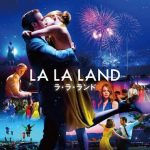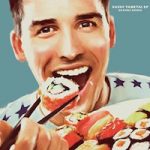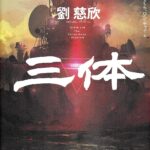Date: 2019 Feb 21th
Interview by Skype
Interviewer: Joe Onishi
In latest work “We Dance Alone”, Yaporigami aka Yu Miyashita announces the new dimension of IDM, by adopting the rhythmic structure 6/4, paying homage to past Techno ‘canons’. He talks about personal musical history, own label named after Antonin Artaud, his albums up to present, and collaboration between visionary images.
―― What kind of music have you been listening to? Tell us your personal music history.
Yaporigami (following, Y) I was born and grew up in Fujiyoshida City in Yamanashi prefecture. I was pretty much normal Japanese kid out there. In low teens, I often sing Karaoke, picking up songs by famous Japanese rock bands like L’arc and ciel and Glay. At the same time, hanging out at the amusement arcade everyday, like many kids usually do.
But one day when I came across with music games there, especially DrumMania, I was into them quite much. I learned it very quickly and I felt an aptitude for drums. Fascinated with shuffle rhythms, found primitive and physical impulse in music.
When my friend’s elder brother let me use electronic drums, I started practicing drums right away. This practice routine occupied throughout my teens. Since I was interested in purely instrumental techniques, I have practiced bands like Slayer with two bass drums and played Slipknot songs at a school festival. At that time, the Internet was not fully developed, I had to discover various kinds of music at TSUTAYA (rental chain equivalent of Blockbuster in US). I also remember I got shocked at Shiina Ringo’s “Kokode Kisu Shite(Kiss me here)” played at the late night TV program.
In high school days, I met the guy in the class who records music at home. Through him, I was introduced to Sky Perfect TV(equivalent of Japanese MTV) and MTV. Then I started to follow Rockin’On (Japanese music magazine, introduces popular Western rock cultures in 90s) type of music like Limp Bizkit, Radiohead and Mad Capsule Markets. And I started to listen to Foo Fighters, Mogwai, Gomez (Scottish band), etc.
Strangely enough, I still couldn’t get IDM at that time. My pal introduced me to Aphex Twin’s Drukqs, however, I was more into band music back then. My reaction was like, the music made by machine and it wasn’t for me, so I couldn’t understand it (laughs).
―― What makes you bring from Yamanashi to Brighton, since this leap seems a little too sudden?
Y I was rebellious kid at that time, felt discomfort and sensed a closure in Japanese society where academic background means and values too much. I felt it was almost like a social disease.
So I had to go abroad. Achieving pretty good grades at high school, therefore no hesitation and nobody had any reason to discourage my ambition. My father was involved in architecture, and in the United Kingdom architecture were treated more like an art than Japan, so I decided to taking major in architecture and decided to go to Cambridge or Brighton.
I was rejected from Cambridge. I suppose it might have happened because I did not dress properly at the interview. I dyed in Blonde and my costume was like real punk. I still regret about what I wore then.
Talking of Brighton, I wanted to go to a city by the sea and as long as I could see from the Internet, the facial expression of the students there was quite good. Also I found the fact that Fatboy Slim held the party at Brighton Beach many times back then. I chose Brighton. It turned out that my intuition was correct.
Soon after getting into university, I met two senior Japanese students majoring electronic music at an international student welcome party. As soon as they noticed that I brought turntables, we hang out right away. Through them, I was introduced to electronic music and more maniac ones.
―― Tell us about your club experience.
Y I was able to go to the club in Brighton at the age of 18 since it is legal there, while in Japan, you must be over 20. I was completely fascinated by 4/4 kicks, the quality of kick drums. I was amazed at the fact that I can even dance with these simplistic style of music.
In this way, I came across the club culture for the first time in UK.
When you start to compose, you will find things easier and faster. I noticed that the snare rush (which is often used in genres like breakcore) of “4” by Aphex Twin, is very musically adopted, also noticed that he really carefully wrote the velocity for these beats. This discovery was crucial to me. When I listened to the synth line, I found out that it came from hunting people, and not from agricultural background which I came from. This awareness was quite an original experience to me.
―― The music listening experience you had came along with stage by stage properly. Therefore, I felt club culture is firmly at your roots. Not saying good or bad, it was different from pastoral, kitsch, Japanese electronica. But I felt there is also a Japanese subcultural elements in your music.
Y Surprisingly, 19-t (Japanese label) owner lived in Brighton. And he introduced me to CDR’s work, (when I did not even know Armen break) (CDR from 2003, with Richard D James as an audience 14m-). Noticing the combination between Anime song and Amen break together, I felt a huge amount of freedom. I think I am fairly honest (laughs) and then convinced that I can do anything in music. The owner of the label 19-t told me about Yamatsuka Eye, etc.and I learned about astonishing Japanese subculture.
―― Can you remind any particular events you’ve interested in ?
Y There is an event called Wrong Music. DJ Scotch Egg playing with so-called Chiptunes by using GameBoy. I was immersed into it. Also there were an artist called Vex’d came out from a label called Planet Mu, I remember Venetian Snares had been invited too, and a breakcore was getting so popular. The event, Breakcore Gives Me Wood, was in Belgium, and it was completely influential at that time. I felt that this movement has the purest rebel spirit and it really felt punk to me.
Then, in 2006, the first album “XIII” (Give Daddy The Knife, 2006) was released. This is my interpretation of breakcore.
―― It is interesting you came across with deep core of Japanese culture in spite of the fact your were staying in England for a long time. For example, I can also detect the influence of noise in your music, but how did you get to know, for example Japanoise, such as Merzbow?
Y When I switched my major to digital music/sound art, I was wondering the fact that why there are so many CDs whose music don’t sound ‘musical’ at all. I needed to figure out these backgrounds, histories etc. Thus, more abstract type of music came in to my life.
In the university library, I listened to Stockhausen, Xenakis, Steve Reich, Toshimaru Nakamura, etc., nd continued to analyse why music such as drone, glitch, noise, concrete are established as music. I started to practice listening to them by myself. But even in university classes, there was a project to compose polyrhythmic piece of music based on Reich’s minimalism. Also there was a lecture on Luigi Russolo where I was introduced to him as a futuristic painter and the person who made noise manifest as well as his instrument Intonarumori. I also learned the fact that I like studying theory, and I think it just fitted for my growth speed. From that time on, I did a free jazz kind of duo inspired by Lightning Bolt. I remember I often listened to the duo by Keiji Haino and Tatsuya Yoshida at the time.
As for noise, rather than pursuing noise in terms of music, I think that it was a music that had a strong affinity with the antisocial part as a manifest as an artist, and that it made sense to do so. Harsh noise is the best expression for an initial impulse and/or energy. It is the best element to express aggressiveness. Noise music’s loudness level is pretty high by default, and it becomes fun when you start to understand listening to these type of music, by grasping textural change processes according to time grid. Then I started to listening to Merzbow, Gerogerigegege, Incapacitants etc. Growing up in Japan until the age of 18, my identity was greatly shaken in UK, thus I had to find my own individuality in music. There was a time thinking that becoming a noise music artist is only possible way to establish my identity. I listened to the noise music, made noise music for years. While attending university, I happened to get a release offer from the German Mille Plateaux. They are interested in series of noise music that I was making.
―― It is “Noble Niche” (Mille Plateaux, 2011) which appeared in the name of Yu Miyashita. I felt that by this time the dark noise elements had been fostered. And 2014 sees a release from Detroit Underground where Richard Devine and Jimmy Edgar belong to.
Y A MV called “SyncBody” buzzed, DU owner saw this, and then contacted me.
――For example, “Hertzian” (Hz Records, 2012) mainly uses 4/4 kicks, but you use lots of sampling in it, and it sounds conceptual that each sound disposed independent with each other. On the other hand, “Eye / Hand” (Detroit Underground, 2015) probably has done most experimentation with rhythmic elements before the latest work.
Y Hertzian surely has a strong sense of sound and desire for timbre / texture, and it was a harvest that I could express it. “Eye / Hand” was created to pursue the feeling that the beats would shift in a chain, though not completely off the floor.
――When I compared your works, you said you created them intuitively in other interviews, but I thought your works themselves were pretty conceptual every time.
Y I usually create songs and when the album release offer comes, I start compiling it by putting my works together. I usually make it intuitively, and there are many similar works at the similar time, so I think it seems that there is a concept for every works.
――Talking of compiling, you also have your own label. Please tell us how you have made the label, The Collection Artaud which is named after Antonin Artaud.
Y “Pour en finir avec le jugement de dieu” by Artaud is one of my favourite book. I think he is a person who always confronted with incongruity against the society and trying to deal with the world where drastic changes are impossible. Apparently I feel strange social restraint from Japan. At one time I read Artaud and I thought that I was truly a human being with a body with organs that is functioning properly. You could enjoy the society as if it were games with insensitivity, but the artist can not do it so well. So I think that it is important for the artist to make ceaseless efforts not to change oneself in the society. I feel from Artaud’s writing that it is a breakup or dissociation against such social pressure, I named after him as a kind of declaration of excavating and supporting Artaud’s living in my modern age.
――So, let’s move onto your latest work “We Dance Alone” then.
Y This is an updated version of the second album “Saryu Sarva” (Symbolic Interaction, 2007), which was inspired by Aphex Twin with his melodic approach. And also I took a new approach in rhythm. I made it 6/4 while referring to 6/8 (eg. Unknown Tongues) of Jlin and 7/8 (eg. Eurocore MVP) of Venetian Snares.
――When I listened to your latest work, I found it’s rhythmically so complicated and sometimes it’s hard to follow rhythmic patterns. Although it is 6/4, there are places actually sounds like 4/4.
Y 6/8 and 7/8 have very unique rhythmic feel, but musical variety based on these time signatures are quite limited I felt. I want more freedom within the time signature, and I found that 6/4 is pretty idealistic for it. This is quite a big discovery for me. If you feel like it’s 4/4, it is exactly the trap I intended to and you just fall into my trap (laughs).
――This time, melodic and riff-like elements are also adopted. Also there are few simple loops, but there are many variations, and I hear many detailed and intricate editings here.
Y I like trick art. For example, Escher’s picture is one of my favourite. I like an illusion art that challenges human perception as well. I like the feeling that tripping into the labyrinth as soon as you try to grasp the structure.
―― In addition, I can hear elements from Boards of Canada and Aphex Twin obviously. There are multi-layered pop elements exist in this album.
Y It is pop at the surface level. I have a desire to deliver music to the large number of audience although I make such an underground kind of music. Even with superficial layers, Boards of Canada and Aphex Twin make great sense. Talking of these classics, I tweeted they’re same as the Bible in terms of layers, and I wanted to create something that arose from multiple layers. Superficial layers tend to be consumed as soon as it is released as a fashion. But, on the other hand, there are the ones considered as classic, especially those of the early albums from Warp records, have some kind of “timeless” quality. However, it is not interesting without “timely” elements when you have to make something as an artist, especially not just willing to take retrospective approach. So I wanted to incorporate the fresh rhythmic elements and tried to combine the contradictory elements. In this way, “We Dance Alone” has made.
―― You worked with VJs, also making MVs and so on. What do you think about such collaborations?
Y I often get audio and visual live offer. And the entanglement with the picture, A impact of the performance seems to be more powerful. For example, Autechre seems to be skeptical with the collaboration with the VJs, and they play in the dark environment, but if there is a visual, I feel that power of the performance simply increases. Especially with the type of VJ that responds well to the audio, the level of synergy seems to be not even just an addition of two elements, rather I feel that the elements are multiplied. Talking of MV, I took Vimeo Staff Picks 4 times (“The Motion Paradox”, “Lilium”, “Mimic” other than “SyncBody” mentioned above), and as far as Japanese musicians are concerned, I am the only person achieved this at the moment I suppose, and this fact makes me proud. I also work on commercials and music for fashion shows too.
――What is the goal you are aiming for, toward the current situation of music?
Y I think that the current situation of music is a state where the flow of things are instant, anti-intelligent and pleasure following and that of opposite are progressing further. What used to be a big culture had some kind of intelligence and coolness, but now I think it would be dissociated and I would love to try to create a work that would be delivered to those two layers. I think that it could be best if I can bring those opposite poles into one hybrid form.
![critique magazine ECRIT-O vol.7 [feat.1]Alternatives of Music Critique [feat.2]Our/My Weekly JUMP](http://ecrito.fever.jp/wp-content/uploads/2019/04/494b51aa06113f256a5d807984ed2f51-1024x689.jpg)










